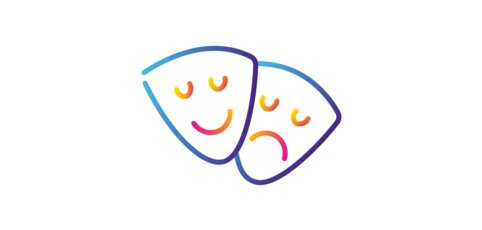Jon Adams on autism, diagnosis and creativity
Published on 18 January 2016
Author: Jon Adams
Jon Adams, autistic freelance artist and Artist in Residence/Research Fellow at the University of Portsmouth, discusses the difficulties he faced pre-diagnosis, and how autism has shaped and influenced his creativity and life.
"An empty chair is often more alive than the person who sits in it."
Something said on the spur of the moment, trusting in my synaesthetic experience which led to an extraordinary adventure within the play 'The Valley of Astonishment' by director Sir Peter Brook.
Feeling different
I had a 'late in life' diagnosis at the age of 52, and although I felt ‘different’ from an early age both the words autism and synaesthesia were only mentioned five years prior to diagnosis. Now, looking back, it's obvious, but I'm not surprised it was missed (alongside my dyslexia) as I'd finished school and was mostly through university when Lorna Wing first mentioned Asperger syndrome.
Not only clear in my personal life but, as I viewed the world with a different lens, a differing perspective, the influence on my creativity and making is not surprising. I don’t think there has been a day where creativity hasn’t been the major part of my life. As a child, I was always assembling, collecting and drawing - never letting go of those desires or a pencil ever since. At 6 years old, when asked what I wanted, I said ‘to be an artist’. It seemed the most honest, logical and heartfelt answer I could give.
Life wasn’t an easy ‘camouflage’ at school, plus an event at primary school where a teacher tore my picture up in front of the class just because I misspelt my name, which has greatly affected me since. Due in part to this, I didn’t go to art college and studied Geology/Palaeontology, my second love, at university instead.
Woven together, they all came in useful when I carved a niche market for myself in the field of scientific illustration. Sometimes I’m not sure if I’m a scientist who can draw or an artist who likes science, a difference in mind-set only paper thin. Although working as a solitary illustrator for the next 25 years, it’s only recently I’ve felt I’m truly fulfilling that childhood wish, in parallel to accepting being with people.
I’ve always been wary of people, their interactions often being confusing and hard to systemise, unlike the natural world processes around me. As an autistic person, I feel people can make or break you - those who ‘understand’ your different thinking being the most important in your life, providing opportunity and acceptance.
This is especially important in employment where ‘mistreatment’, deliberate or not, adds mental health issues and post-traumatic stress disorder (PTSD) to the weight of the rucksack you carry already. Without understanding on the employer’s part all this adds to low self-esteem and becomes a self-imposed barrier, stealing focus away from what we can do and our talents. From recent experiences I've unfortunately found that there are no grey areas – we are either enabled or ‘left’ to struggle. Autism awareness and listening to what we say we need is key.
Autism and creativity
I firmly believe it’s the creatively divergent way of thinking that’s enabling as an autistic artist, but this can’t usefully exist in isolation. It needs an opportunity to be revealed and nurtured, and an understanding of neurodiversity is vital. We can see and reveal patterns, thoughts and ideas very differently, and when “compelled to make” can do so with great concentration and detail.
Autism creativity can be a double edged sword, we can be haphazard with finance because that's not our primary motive, and obsession with detail leads to levels beyond what is expected. This may be time consuming but I couldn’t have it any other way.
Synaesthesia
I’m often asked what synaesthesia is like. The only sensible answer I can give is ‘well what is not being synaesthetic like?’ It’s only describable in pale poetic words or shallow examples - how do you share the immersive experience of swimming in an ocean to someone who has never seen the sea.
As with my autism it adds a different inseparable experience of the world. I touch time or space, feel music as shape/direction, and taste colour (this actually stops me physically painting as yellow tastes of mould). Some of my experiences were used in the research with the team creating the play ‘The Valley of Astonishment’ which added to my confidence, experience and courage.
An opportunity to play for a day in The Turbine Hall at the Tate Modern enabled me to use that inner voice. I replayed the sound of seagulls and brought my internal synaesthetic response to life in that space, for everyone to hear. I also imbue inanimate objects with ‘personality’ and as a child had a ‘cat balloon’ that lasted 3 days until I was devastated at its popping!
A performance work written for Venice Biennale15 called ‘Games with the Water Horse’ (a play on the word Hippocampus) weaves autobiography and all these thoughts together - my ‘personal life’ being displayed as the work of art.
I’m confident with my neuro-difference, I wouldn’t change anything other than maybe people’s attitudes and their understanding but that’s something hopefully I can help to achieve with the work I make and show.



